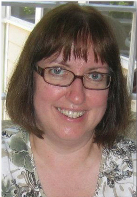Tips from the AEJMC Teaching Committee
Rewarding Good Teaching
 By Karen Miller Russell
By Karen Miller Russell
Associate Professor
Standing Committee on Teaching
University of Georgia, Grady College
russell.uga@gmail.com
(Article courtesy of AEJMC News, March 2014 issue)
One of the best things that the AEJMC Standing Committee on Teaching offers is its Best Practices in Teaching Competition.
Becoming a good or even great teacher is a life-long process, one that is not always rewarded by educational institutions in the same way that good or great research can be.
“Currently, research universities base tenure decisions primarily on research productivity and quality,” organizational psychologist Adam Grant recently stated in an op-ed in The New York Times. “Teaching matters only after you have cleared the research bar: It is a bonus to teach well.”
Of course, not all universities overlook good teaching, and many colleges and departments of mass communication recognize teaching through annual awards. These awards are significant ways to reward good work, but they don’t go far enough.
Writing for Inside Higher Ed, Elizabeth H. Simmons points out that faculty must be strategic in how they spend their time. Therefore, she argues, “If a department or college believes that innovative teaching is important, then innovative teaching must be rewarded in decisions related to salaries, reappointment, promotion and tenure.”
The Standing Committee on Teaching tries to facilitate that process by providing a national forum to call attention to innovative teaching in journalism and mass communication. Each year the committee selects a different theme — this year it’s “Globalizing the Classroom” — and members submit their assignments, classroom activities or ideas for competitive review.
Winning faculty members will be invited to present their ideas at the national convention in Montreal, and they’ll receive a cash prize.
But the competition does more than reward faculty who are trying innovative approaches; it also allows them to share their ideas with other faculty. In addition to being presented at the meeting, the winning entries are published in an e-booklet, and I cheerfully admit to shamelessly copying at least one past winner in my own classroom.
“Teaching is the core of what we all do. Recognizing great teaching ideas helps us learn from each other and become better teachers,” said Chris Roush of the University of North Carolina at Chapel Hill, this year’s competition chair. “I’m constantly learning from my peers at UNC, and this is how I can expand that learning to the best around the country.”
If you would like to enter this year’s competition, the process is simple. Just write a two-page statement describing a new and effective approach you used to bring global ideas into your classroom. The call for entries (on p. 10) specifies that you need not be teaching a class specifically on international media. In fact, the committee would like to learn how you incorporate awareness of global communities and/or the practice of journalism and mass communication beyond national borders into any course.
I also urge you to take a few minutes to check out the downloadable booklets from past best practices competitions, on subjects ranging from writing to ethics and from information gathering to critical thinking. They can be found on the AEJMC website at http://www.aejmc.org/home/2010/09/best-practices-in-teaching-booklets/.
You might find inspiration for your own great teaching ideas.
 Print friendly
Print friendly






